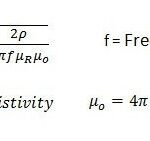What is eNodeB based on?
Let me explain this to you clearly — the eNodeB, or evolved Node B, is a fundamental part of the LTE network. You and I can think of it as the bridge between your mobile device and the LTE core network. But to truly understand what the eNodeB is based on, we need to look at both its architecture and its underlying technologies.
The eNodeB is primarily based on three main foundations:
- OFDMA and SC-FDMA: The eNodeB uses Orthogonal Frequency Division Multiple Access (OFDMA) for downlink and Single Carrier Frequency Division Multiple Access (SC-FDMA) for uplink. These technologies improve spectral efficiency, reduce interference, and help in handling multiple users at once. If you remember our previous discussion on LTE multiple access techniques, this aligns with what we covered there.
- IP-Based Architecture: Unlike older systems like GSM and UMTS, which relied on circuit-switched networks, the eNodeB operates over a fully packet-switched IP architecture. This means it communicates using IP protocols, allowing for higher data rates and lower latency.
- Integrated Functionality: Earlier generations used separate nodes for radio and control functions (like NodeB and RNC in UMTS). But in LTE, the eNodeB merges both radio and control functionalities into one entity. So, it’s not just transmitting and receiving radio signals — it’s also handling Radio Resource Management (RRM), scheduling, handovers, and more.
Now, to give you a bit more context — the eNodeB connects directly to the EPC (Evolved Packet Core), which includes elements like the MME (Mobility Management Entity), SGW (Serving Gateway), and PGW (PDN Gateway). It handles user plane and control plane traffic without the need for an intermediary controller like in 3G.
So when you, as a user, access LTE services like video streaming or voice over LTE (VoLTE), it’s the eNodeB that manages your device’s connection, ensures your data packets are delivered correctly, and even takes care of your mobility as you move from one cell to another.
Internally, an eNodeB is built on components such as:
- Baseband Unit (BBU): Handles signal processing and digital functionalities.
- Remote Radio Head (RRH): Converts signals between analog and digital formats and transmits them over antennas.
- Antennas: These broadcast and receive radio signals from your device.
As we’ve explored in earlier articles — like those about LTE architecture or reference signals — the eNodeB is not a simple base station; it’s a smart, multifunctional unit at the heart of LTE’s performance. It’s based on efficiency, integration, and adaptability to support modern mobile communication requirements.


